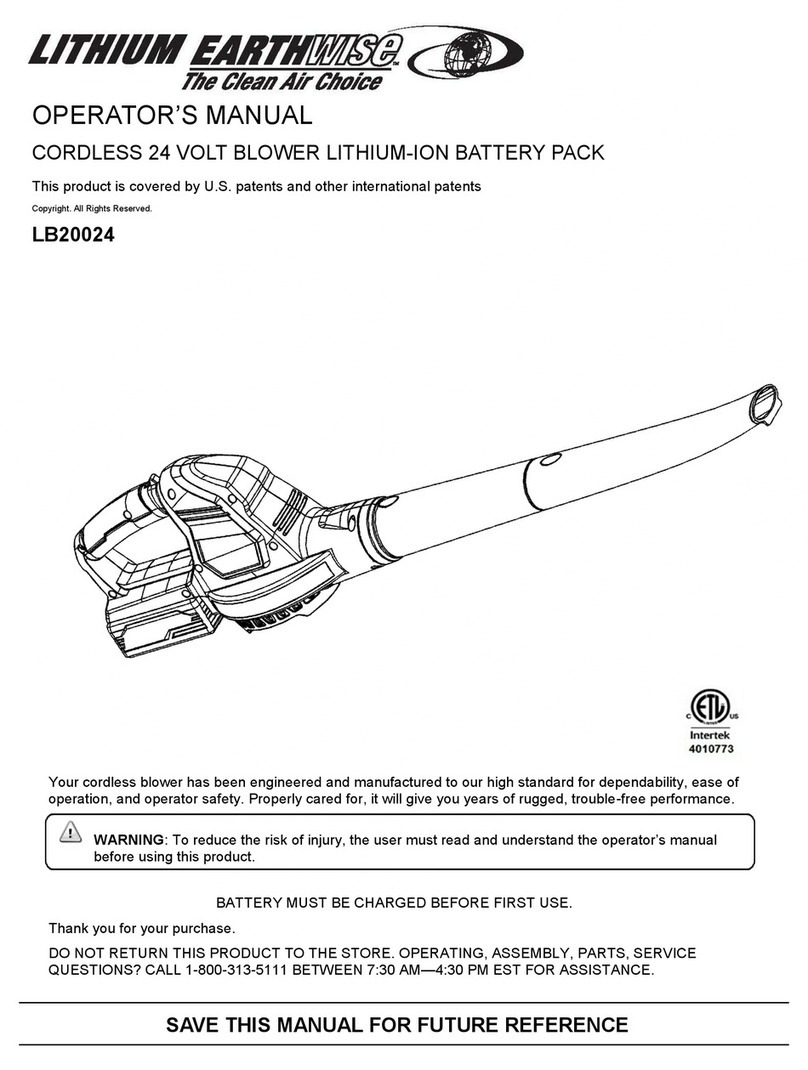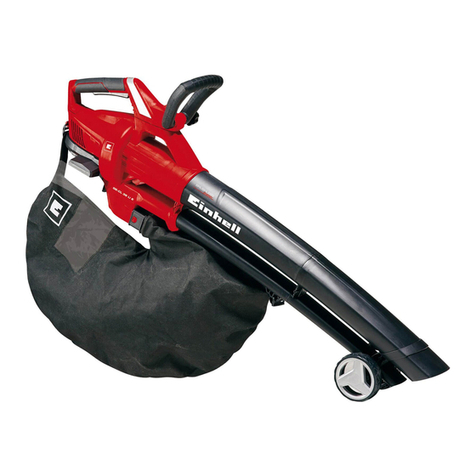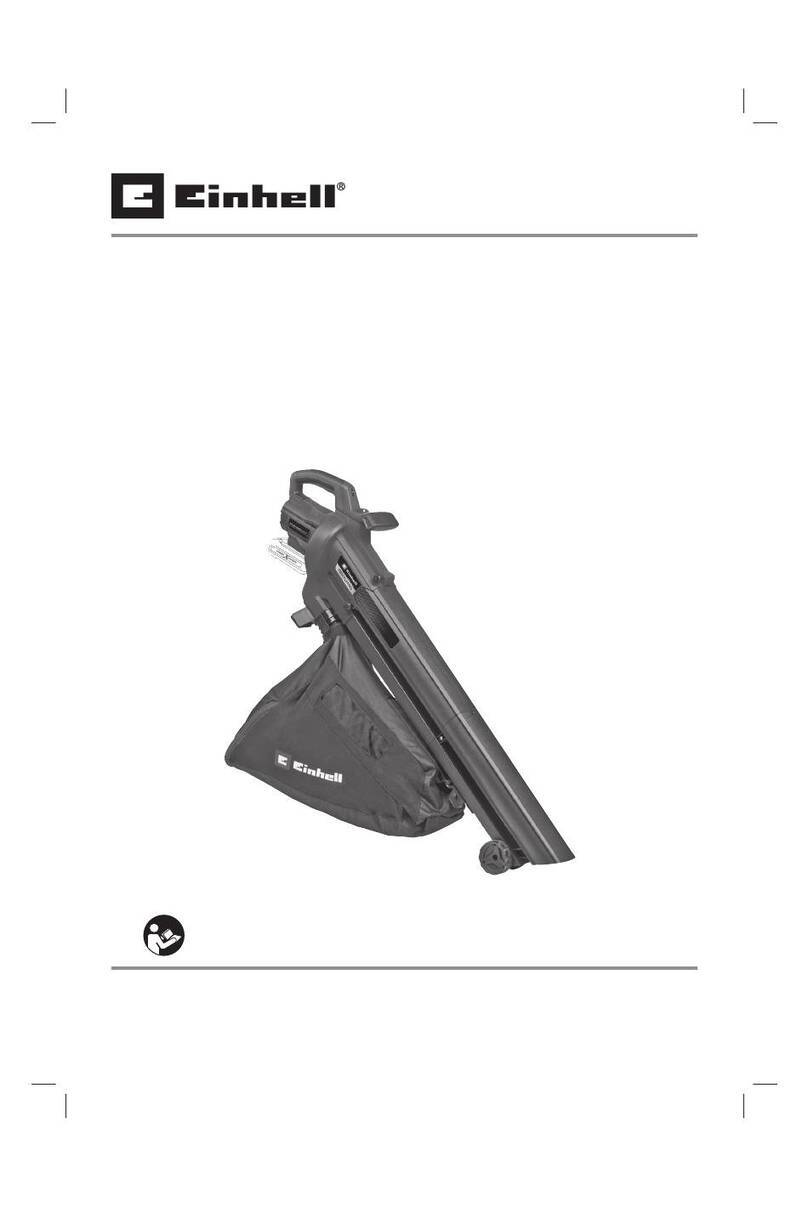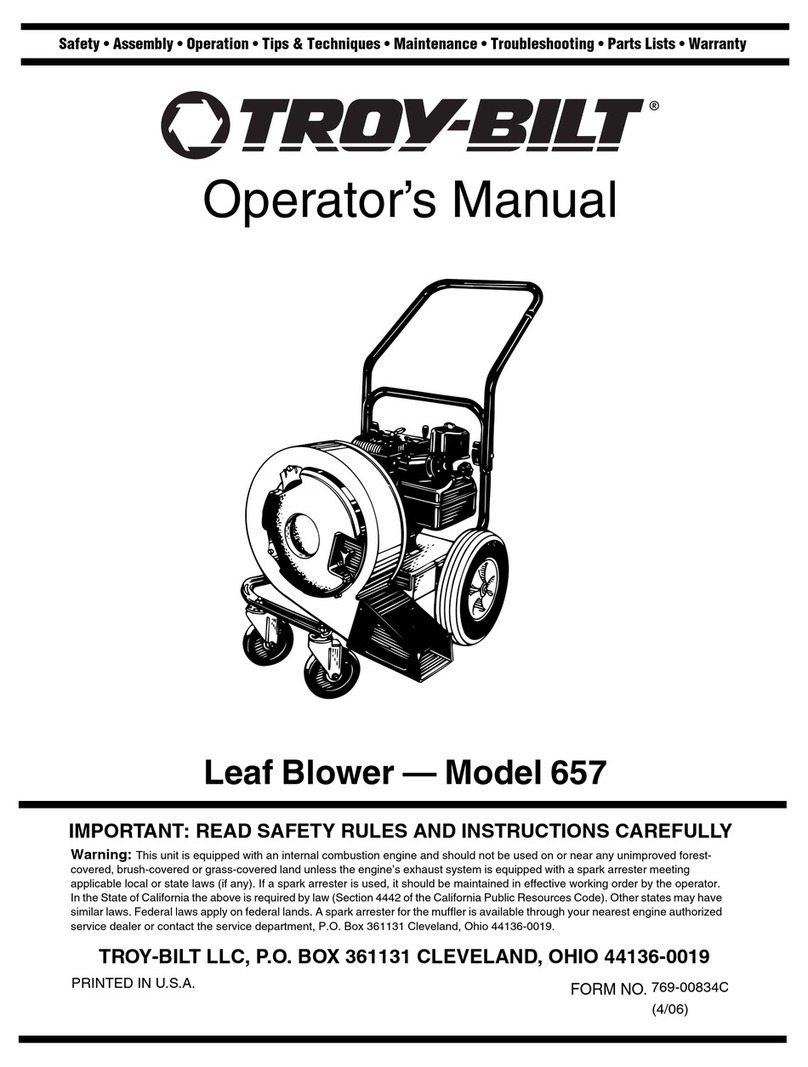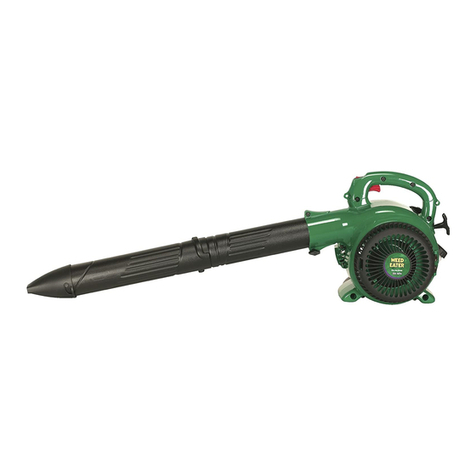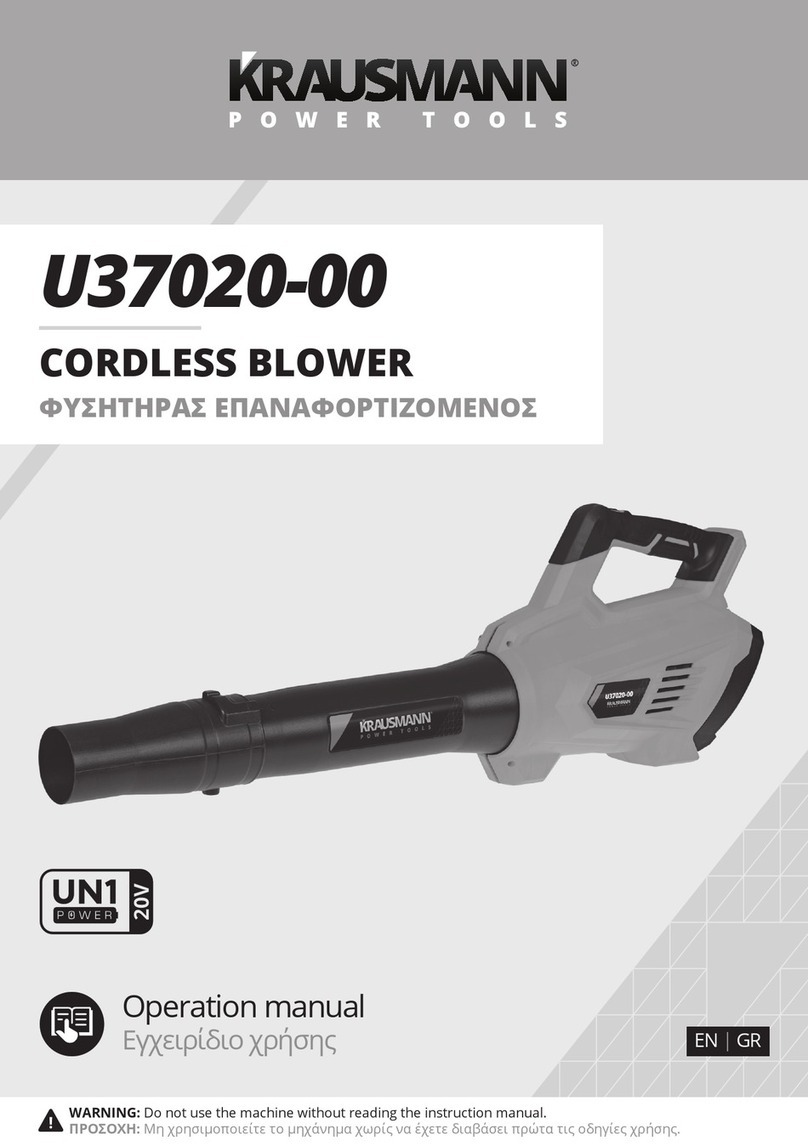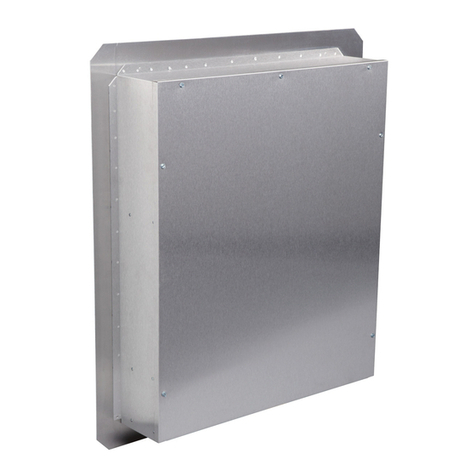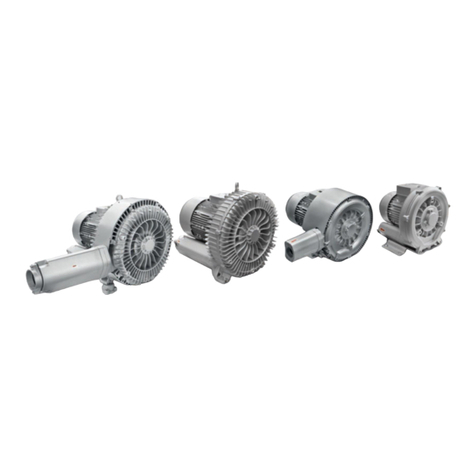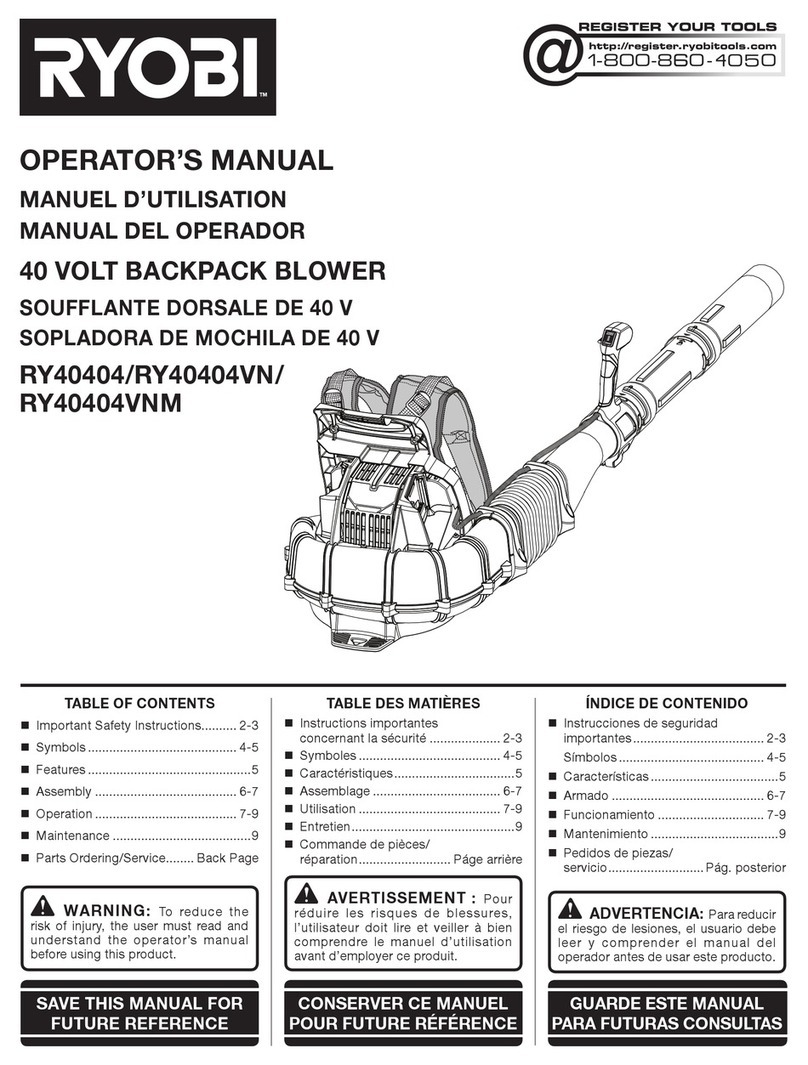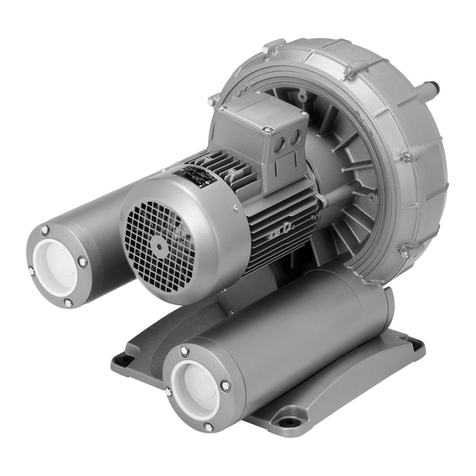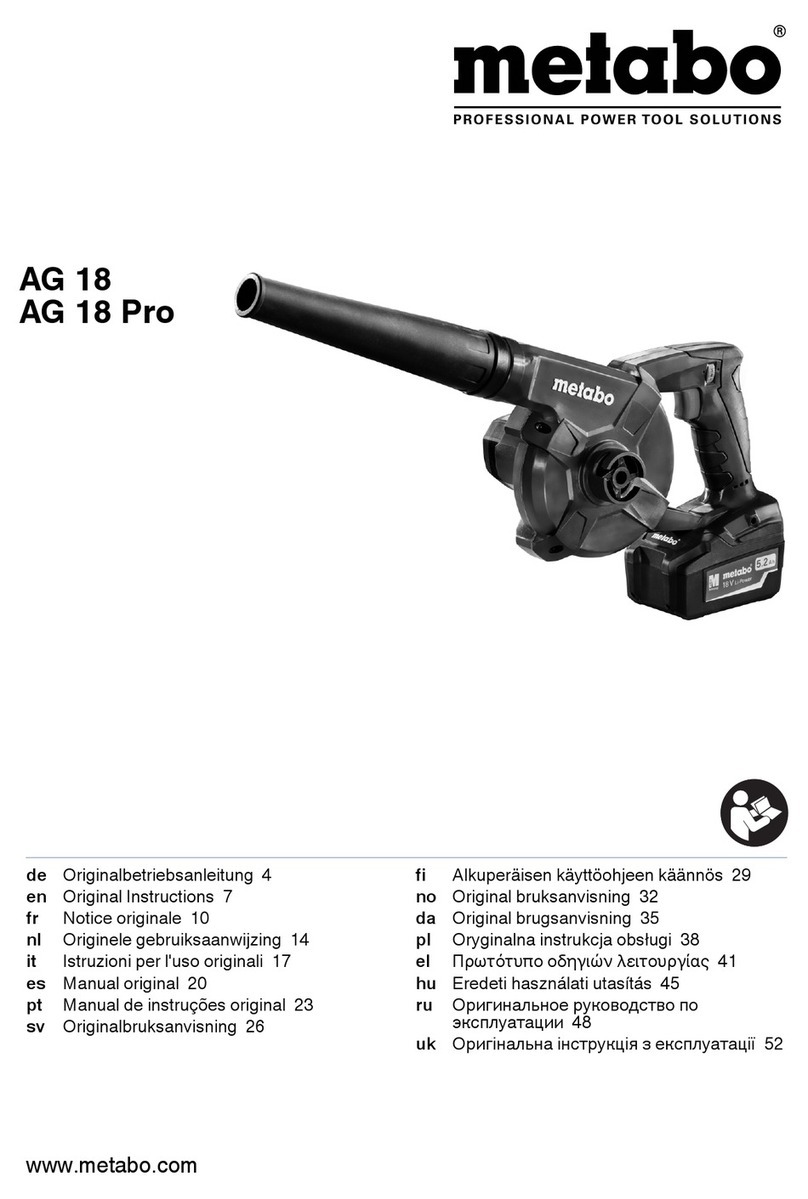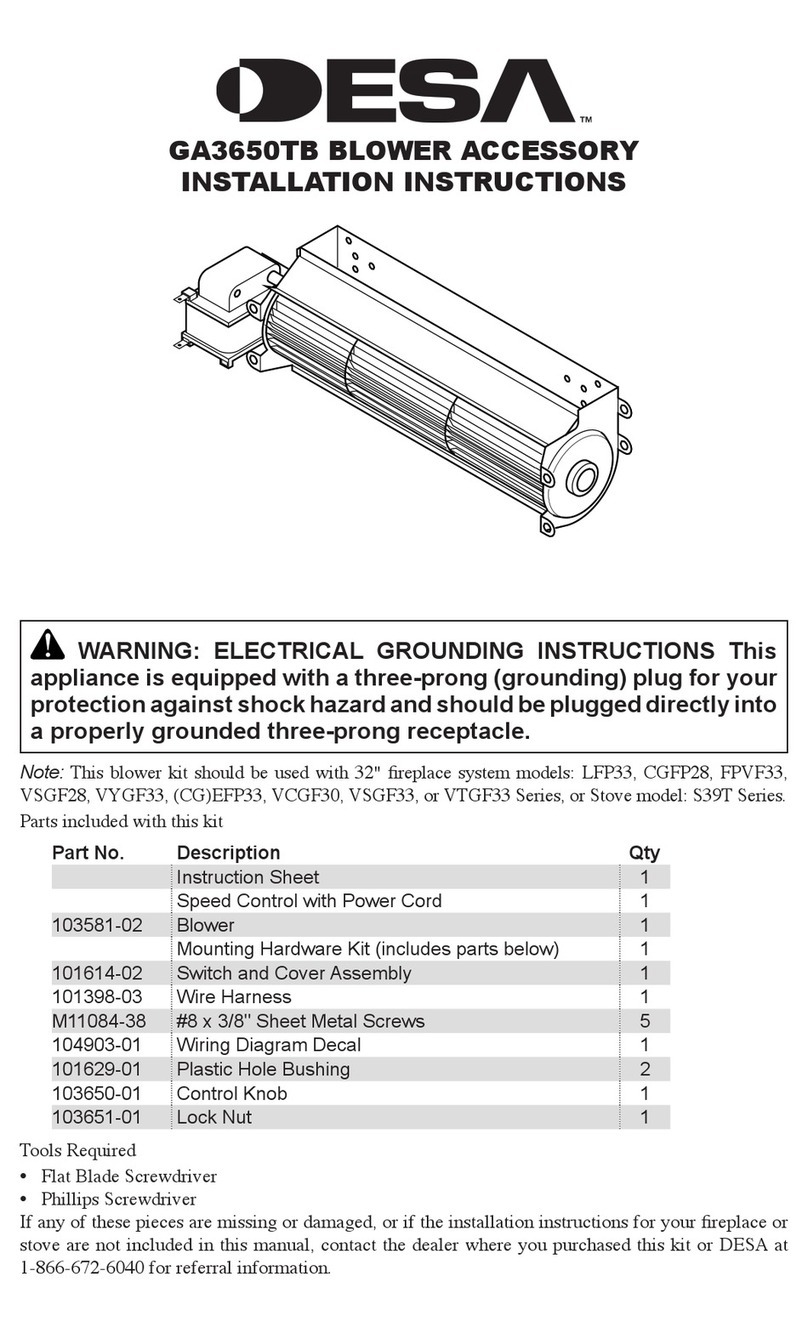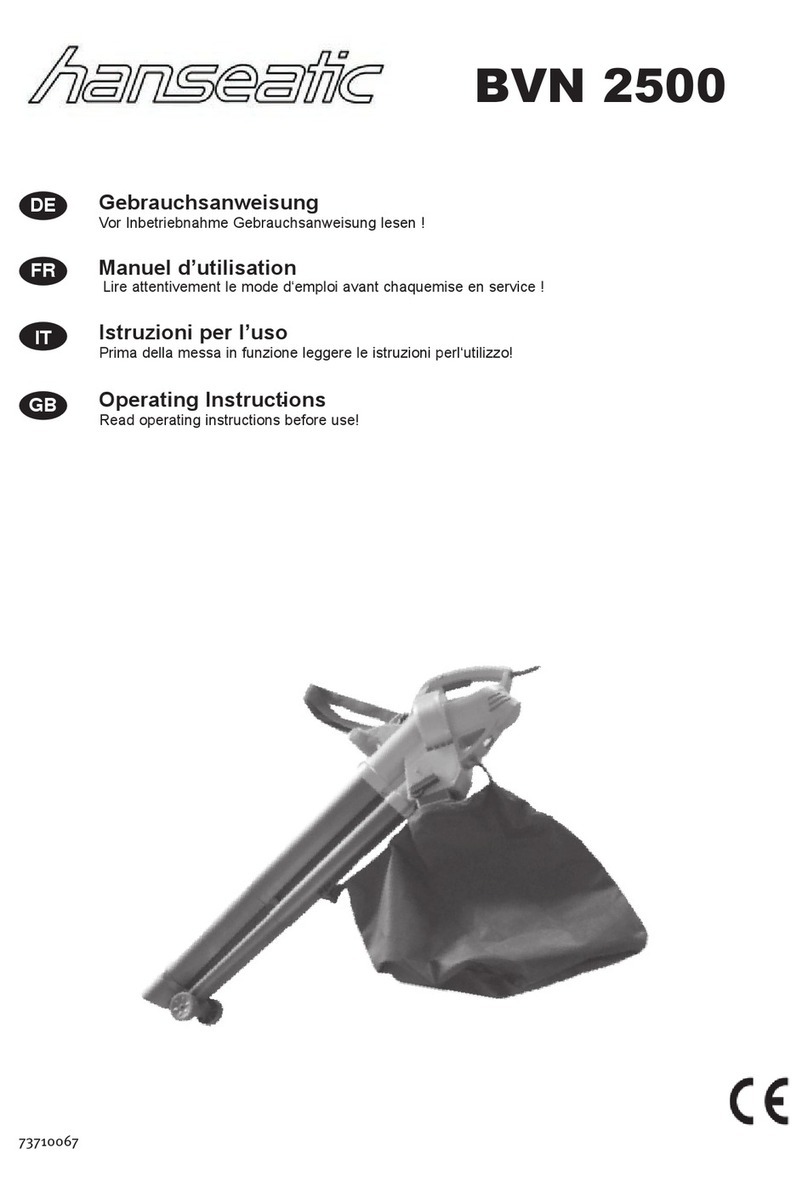Intended Use
2 Intended Use •exist in the following designs:
–single-impeller
These operating instructions –two-impeller
The two-impeller pump-motor units in turn
•
apply to side channel blower of the 41XX differ in the following designs:
series,types:
–two-stage design
4110, 4120, 4140, 4160 (for increased pressure difference)
–double-flow design
(for increased feed volume)
•
contains instructions bearing on transport
andhandling, installation, commissioning, •are intended for industrial applications,
operation, shut-down, storage, servicing
and disposal of the 41XX, •are designed for continuous operation.
With an increased switch-on frequency or an
•
must be completely read and understood by increased gas entry and ambient temperature,
all operating and servicing personnel before the limit overtemperature of the winding and
beginning to work with or on the 41XX, the bearing can be exceeded.
Consultation with the Service Department is
•
must be strictly observed, required for operating conditions of this kind.
•
must be available at the site of operation of When operating the 41XX, the limits listed in
the 41XX. Chapter 3, "Technical Data", Pg. 7 ff. must
always be complied with.
About the operating and servicing personnel of
the 41XX:ForeseeableMisuse
•
These persons must be trained and It is prohibited
authorized for the work to be carried out.
•
to use the 41XX in applications other than
•
Work on electrical installations may be industrial applications unless the necessary
carried out by trained and authorized protection is provided on the system, e.g.
electriciansonly. guards suitable for children's fingers;
The 41XXs •to use the device in rooms in which explosive
gases can occur if the 41XX is not expressly
•
are pump-motor units for generating intended for this purpose;
vacuum or gauge pressure;
•
to extract, to deliver and to compress explosive,
•
are used to extract, pump and compress flammable, corrosive or toxic fluids, unless
the following gases: the 41XX is specifically designed for
–
Air,
this purpose;
–
Non-flammable,non-aggressive,nontoxic
and non-explosive gases or gas-air mixtures. •to operate the 41XX with values other than
–
With differing gases/gas-air mixtures, those specified in Chapter 3,Technical Data,
inquire with the Service Department. Pg. 7 ff.
•
are equipped with one of the following kind Any unauthorized modifications of the 41XX
of drive motors: are prohibited for safety reasons.
–
3-phase AC drive motor The operator is only permitted to perform the
with a standard or explosion-protected design maintenance and service work described in
–
Single-phase AC drive motor these operating instructions.
These operating instructions apply only to Any maintenance and service work which goes
pump-motor units with a standard design. beyond this many only be performed by
For an explosion-protected design companies authorized by the manufacturer
(EEx e II), see the separate operating (inquire with the Service Department).
instructions.
